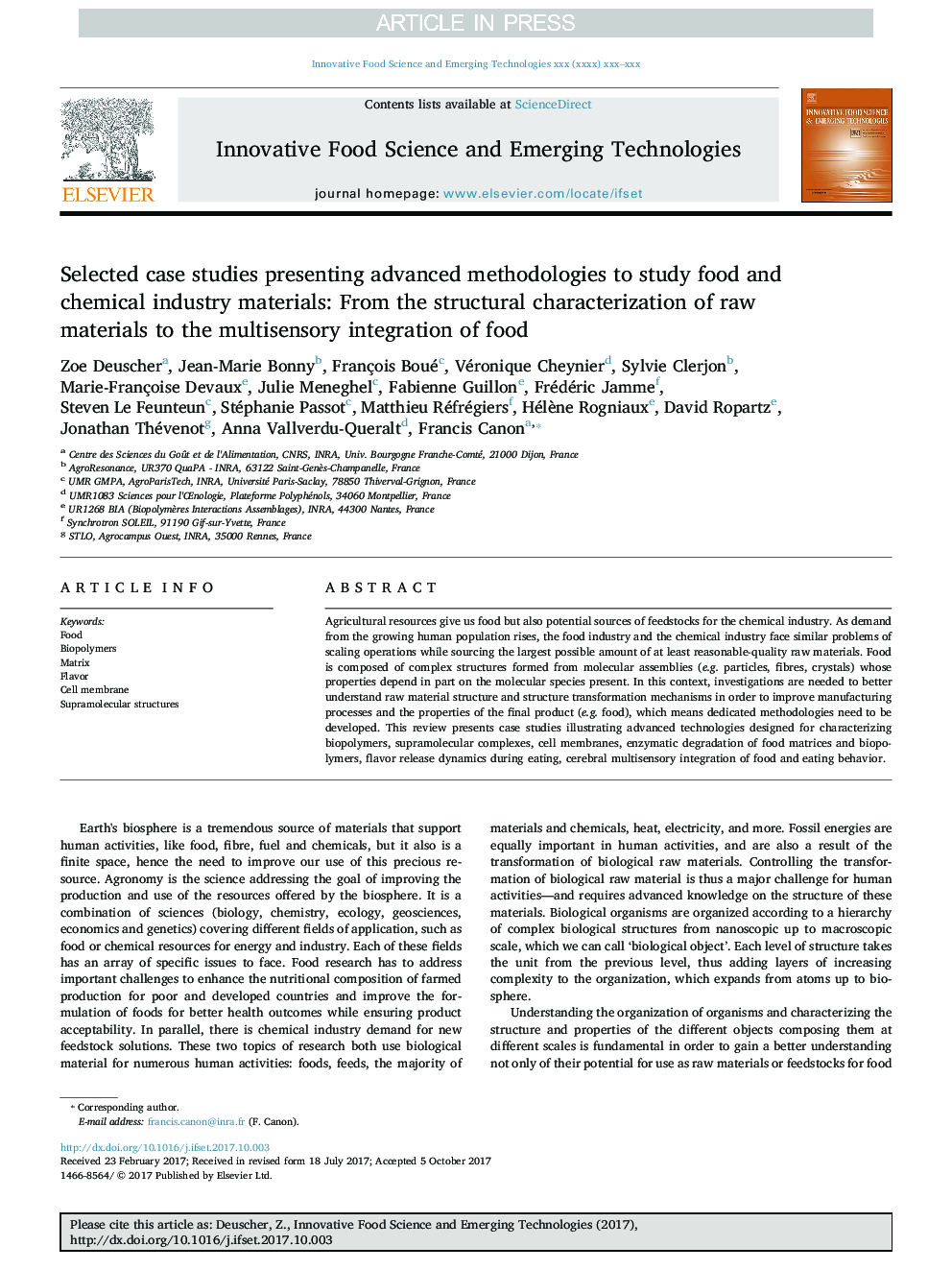| Article ID | Journal | Published Year | Pages | File Type |
|---|---|---|---|---|
| 8415469 | Innovative Food Science & Emerging Technologies | 2018 | 12 Pages |
Abstract
Agricultural resources give us food but also potential sources of feedstocks for the chemical industry. As demand from the growing human population rises, the food industry and the chemical industry face similar problems of scaling operations while sourcing the largest possible amount of at least reasonable-quality raw materials. Food is composed of complex structures formed from molecular assemblies (e.g. particles, fibres, crystals) whose properties depend in part on the molecular species present. In this context, investigations are needed to better understand raw material structure and structure transformation mechanisms in order to improve manufacturing processes and the properties of the final product (e.g. food), which means dedicated methodologies need to be developed. This review presents case studies illustrating advanced technologies designed for characterizing biopolymers, supramolecular complexes, cell membranes, enzymatic degradation of food matrices and biopolymers, flavor release dynamics during eating, cerebral multisensory integration of food and eating behavior.
Related Topics
Life Sciences
Agricultural and Biological Sciences
Food Science
Authors
Zoe Deuscher, Jean-Marie Bonny, François Boué, Véronique Cheynier, Sylvie Clerjon, Marie-Françoise Devaux, Julie Meneghel, Fabienne Guillon, Frédéric Jamme, Steven Le Feunteun, Stéphanie Passot, Matthieu Réfrégiers, Hélène Rogniaux,
